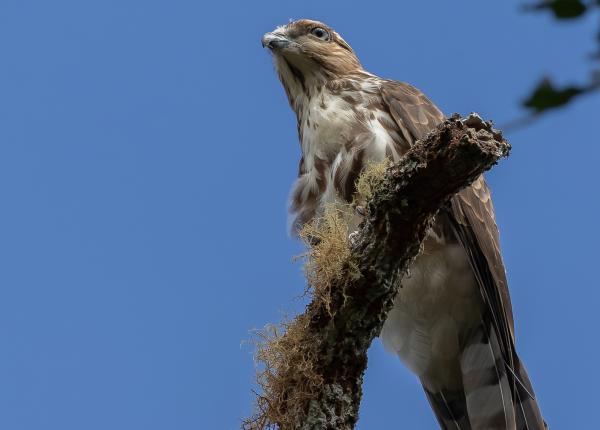Did You Know?
- The Madagascar Cuckoo-hawk is also known as the Madagascar Baza
- Researchers have described this bird's flight as "slow, heavy, flapping."
How The Peregrine Fund is Helping
The Peregrine Fund has been working in Madagascar for decades and today we have a full-blown conservation program in there which includes studying endangered and poorly known Malagasy raptors, developing local and national capacity in biodiversity conservation, and increasing the size of Madagascar's Protected Areas System. A very exciting success came in 2015 when, after years of working with local communities and government, three new areas were give status as "National Protected Areas." This victory has increased protected habitat by 190,000 hectares and will provide protection for an untold number of species.
Where It Lives
The Madagascar Cuckoo-hawk is endemic to Madagascar. It makes its home throughout much of the island in all different types of habitats, including evergreen, dry deciduous forest, coconut and other palm tree plantations, forest edges and even near human-occupied areas. It is normally found from sea level to around 1,600 meters above sea level.
What They Do
This lovely hawk is mostly crepuscular - meaning it is most active during the hours of dusk and dawn. It is nonmigratory and doesn't spend much time soaring, as many other hawks do. When perching, it seems to prefer to do so within the branches of a tree, rather than in exposed tree tops. It has been described as being "secretive," and is spends much of its time alone, though it is sometimes seen in pairs.
Why They Need Our Help
This hawk is found in suitable habitat throughout Madagascar. Though it may be negatively affected to changes in its habitat, especially through deforestation, biologists don't believe that it is currently under any great threat. It is categorized as a species of "Least Concern" by BirdLife International.
What They Eat
The Madagascar Cuckoo-hawk has a long list of items on its menu. While it mainly consumes small reptiles, such as chameleons and geckos, it also preys upon amphibians and large insects such as grasshoppers, mantises, cicadas, and beetles. It may capture its prey on the ground, on tree trunks, or from within vegetation.
Nests, Eggs, and Young
There is still a lot for us to learn about the breeding biology and behavior of the Madagascar Cuckoo-hawk. Both the male and female work together to gather sticks and other nesting material, but it is the female who is responsible for arranging all of these materials into an acceptable nest. Once the nest is built, the female will lay 1-2 eggs. Both the male and female will work hard to protect and incubate the eggs, which they must do for about 31 days before the nestlings will hatch. Once they do, they will be covered in fluffy white down. But rest assured, they will grow quickly! After around 43 days the nestlings will leave the nest, but they will remain with their parents for another 86 days or so as they learn to hunt and survive on their own.
Madagascar Cuckoo-hawk and the World Center for Birds of Prey
The World Center for Birds of Prey offers fun ways to learn about birds of prey. Interactive activities, tours, interesting videos and a children's room with activities from coloring sheets to quizzes to costumes await you. At our visitor center, you can see many hawks up close and learn about the wonderful and interesting adaptations they have in order to survive in their respective habitats.
References:
Global Raptor Information Network. 2021. Species account: Madagascar Cuckoo-hawk Aviceda madagascariensis. Downloaded from http://www.globalraptors.org on 24 Dec. 2021
Kemp, A. C. and G. M. Kirwan (2020). Madagascar Cuckoo-Hawk (Aviceda madagascariensis), version 1.0. In Birds of the World (J. del Hoyo, A. Elliott, J. Sargatal, D. A. Christie, and E. de Juana, Editors). Cornell Lab of Ornithology, Ithaca, NY, USA. https://doi.org/10.2173/bow.madcuh1.01









